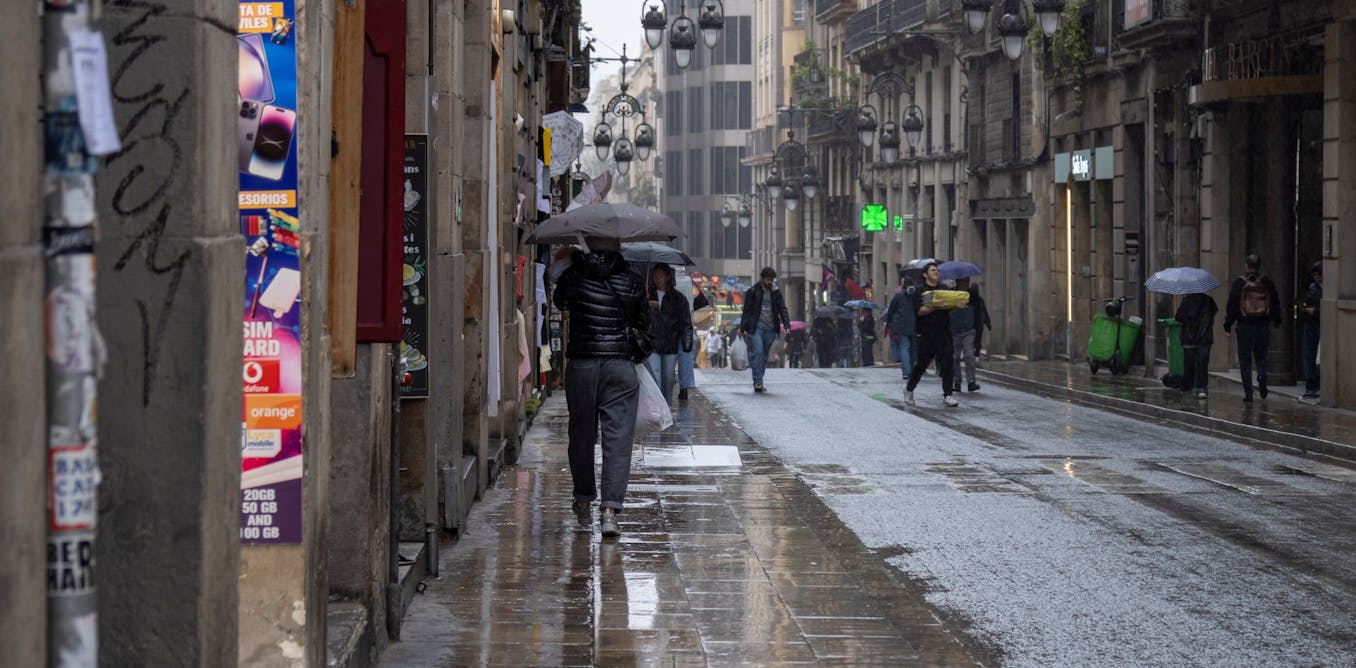The Hard Truths of Artsi Ifrach
It’s a scorching Friday in Morocco, with the sun at its highest point in the sky. Artsi Ifrach is lounging in his atelier, a big bright space in Marrakech draped in flowing mustard curtains and marble floors, which he opened in 2023, six years after founding his namesake label, Maison Artc. He’s hard at work preparing a new collection that will show at a palace in Cádiz, a coastal city in the Andalusia region of southwestern Spain.
“I need to surprise, again, first of all myself, and then people,” he says, lifting a cigarette to his mouth with tattooed fingers and silver-painted nails, the smoke curling up and streaking the Zoom screen.
There was no shortage of surprise at London Fashion Week earlier this year, when the multi-hyphenate creative (fashion designer, photographer, creative director) unveiled his spring-summer 2025 collection. Titled Coming Home, it was a nostalgic tribute to the Moroccan diaspora that felt less like a runway show and more like a cultural reclamation. Each piece was one of a kind and made from scratch: stripped fabrics resewn together, ancient garments repurposed, vintage finds upcycled. “I’m playing a lot with the dialogue of memories,” Ifrach says. “Through my pieces, I like to provoke emotion. Especially in the Middle East, in the Arab world, it’s all about rouh [soul].”
Wearing a black bandana over a cap, Ifrach runs his hand across the buzzed salt-and-pepper hair on the sides of his head. As he speaks, a standalone silver earring dangles from the second piercing on his earlobe. He’s wearing a sharply tailored blazer embroidered with fine white thread. Underneath, a flimsy ribbed tank clings loosely to his frame. This is Ifrach – part fashion statement, part living archive.
Admiring Ifrach’s work involves taking a trip down memory lane. A scroll through his Instagram feed feels like flipping through an old photo album: it’s the playful colour palettes, but also the Snoopy and Mickey Mouse tattoos, Morocco licence plates stamped with camel and palm tree symbols, a stolen taxi sign reimagined into a hat, a dishdasha and fez with props like La Vache qui Rit cheese triangles. His visuals stir a deep sense of familiarity, a return to childhood.
To build that archive, Ifrach travels across the world, meeting with antique dealers and scouring flea markets to carry a suitcase full of sourced heirlooms back to Marrakech. Upon arrival, he unpacks his finds with his team of two: Samira, who brings the garments to life, and Fatikha, the hand behind the embroidery. With Ifrach at the helm of the visuals, the trio discuss the treasures. “I take it piece by piece and create a story from each one,” he says. Sketching builds walls in his mind, so instead he relies on intuition. “I say, ‘Okay, what story would I like to tell?’”
His work embodies the magic and mayhem of maximalism with a cultural twist: radiant colourways, exaggerated collars, sharp edges, and fluffy polka dots. In many ways, it’s paradoxical: loud, animated, and cartoonish at times, elegant, edgy, and understated at others. The pieces are wearable works of art, so it’s no wonder that they’ve earned their spot in major cultural institutions: the burqa-slash-trenchcoat at London’s Victoria and Albert Museum that became a centrepiece at the Brooklyn Museum’s Africa Fashion exhibition. Now, he’s hinting at a new collaboration with one of the world’s biggest museums that he “cannot discuss”. All bets are on the Louvre by the time this hits newsstands.
Ismail Zaidy & Artsi Ifrach
Yet, it took Ifrach more than 10 years to consider himself a fashion designer. “Before that, I didn’t feel that I had my voice, my DNA, or my language, and I didn’t understand the full process of what I was doing,” he says. But while he has embraced that part of himself today, there are caveats: “I don’t want to be a designer of a product and I don’t want to be a designer of celebrity. I want to be a designer of my culture.” Above all else, he’s a world-builder.
Born in Jerusalem to two Moroccan parents, Ifrach spent the formative years of his life as a ballet dancer. Growing up, his father worked at local museums, so while it wasn’t till his late twenties when he stepped into fashion, being an archivist has perhaps always been part of his DNA. His rejection of the conventional runs even in his background: Ifrach is a self-taught designer. He never had formal fashion training. Yet today, his work is being studied in fashion schools worldwide.
His foray into fashion began some 20 years ago, one rainy day in Amsterdam. Ifrach, then a wide-eyed 28 year old, ducked into a flea market for shelter and sipped on some coffee. “I stood by a small terrace, looking.” He spotted a woman sitting at one of the stands. A huge tapestry lay on the table before her. It had an intricate map stitched into it, but was cluttered with knick-knacks on top of it. Something about it spoke to him, and so he walked up to her. “I asked her if she would sell it to me, and she was kind enough to do so,” he recalls. Rushing home, he started playing around with the fabric and eventually turned it into a dress. The tapestry became the bustier, the map the flowing skirt.
“It’s the first memory and the first piece I ever created,” he says. “This was the beginning of me becoming a creator, but for the longest time I wasn’t Maison Artc.”
Things snowballed. He moved to Paris and stepped into the world of haute couture. But something nagged at him. His designs clashed with the industry’s faced-paced consumerism and he often felt his designs went against who he was. “Sometimes, your dream can become your nightmare,” he says of that time. “I felt that this dream I was dreaming was the wrong dream for me.”
Ismail Zaidy & Artsi Ifrach
In 2011, he decided to relocate to Marrakech, his parents’ hometown. Slowly, much like the vintage finds he rips apart and sews back to place, the pieces of his life began finding form. Despite being a stomping ground for creatives – with style pilgrims flocking to Yves Saint Laurent’s Jardin Majorelle and travellers buzzing around Medina’s bustling Jemaa el-Fna Square – Marrakech is not considered a fashion capital. But for Ifrach and his craft, this isn’t a drawback, it’s an advantage. “Fashion cannot give you creativity – culture can,” he says. “Morocco allows me to do this kind of work. When you live in a cultural place, you don’t have to go to a museum to see inspiration. You just go to the street and everything is in front of you.”
Still, Ifrach says his responsibility as a creative falls far beyond the pursuit of beauty. He feels a sense of duty. “Somehow, a lot of us think that the outside, or the Western world, is better. That there are more opportunities. This is not something I agree with,” he says. “I take responsibility to show the beauty and the value of what our culture means to us, through our eyes, in a way that functions internationally. Because I have this responsibility, I also try to preserve the past. If we don’t take care of it, it will disappear and then we’ll lose our identity.”
For Ifrach, recognition didn’t come overnight. The brand’s gender-fluid, boundary-pushing designs were received differently worldwide – embraced by some, but challenged by others. “In the beginning, I think I was a bit misunderstood,” he says. “A lot of people didn’t really understand what I was actually doing.” He credits his success to taking the long road over shortcuts. “When you arrive fast, it goes away fast, too.”
Ismail Zaidy & Artsi Ifrach
Two mannequins face each other behind him: one untouched, the other draped in a cascade of black fabric from the waist down. Ifrach is one of a growing number of regional creatives who are gaining global recognition not just for what they create, but how they create. Crafting enduring, ethically sourced and sustainable pieces, Ifrach refers to them as investments durable enough to pass down to grandchildren. He’s a big advocate of slow fashion, even at the expense of his finances. “There is a limitation for what I do: I can’t produce in big quantities, and I probably can’t make so much money,” he says. “But I also learned, the more money you have, the more you spend on things you don’t need. And honestly, it’s given me a beautiful life in Marrakech.”
In the click-for-content age of influencer marketing, even the most established brands utilise celebrities to promote their clothes. But Ifrach is known for his aversion to big branding and deliberately exercises restraint when it comes to working with stars. He doesn’t dress celebrities. If they love his work and respect his craft, they’ll invest in his pieces themselves. They’re the ones with disposable income after all. Still, his clientele is global, spanning “art dealers, creators, designers, prime ministers, first wives, princesses,” he lists off. “But we’re private with them – there is no abuse situation.” Celebrity-driven hype drives temporary demand, but he says that’s as overwhelming as it is fleeting. Ifrach’s hope is for more intentional, authentic endorsements of fashion from stars who showcase their personal style over mindless promotion.
As for the fashion industry’s biggest flaw today? Ifrach pauses, saying the question answers itself. “If you attach industry to fashion, it’s not fashion – it’s industry,” he quips. “I don’t need to be a creative director in a big fashion house or have celebrities wear my clothes in order to exist. By becoming you, you’re already successful.”
Ismail Zaidy & Artsi Ifrach
His contrarianism even trickles into his price model. Surplus pieces in his space that don’t sell after three months become more expensive. “There’s so much work in it, it gets visibility, and it’s one of a kind,” he reasons. “So if it stays longer than it should, it goes up in price.” It’s the antithesis of clearance and end-of-season sales. Much like the cost of aged wine, an antique Turkish rug, or a Roman sculpture, the older it gets, the more valuable it becomes.
Ifrach, who is having his third cigarette in front of me, is very much a man of symbols. From those four capital letters H-O-P-E tattooed across his fingers to the Kaf etched at his Adam’s apple, every inch of him, down to his words, reflects a reverence for higher power. “If God knows me, I’m famous already,” he hums.
Ifrach once said that success, to him, means to do what you love without boundaries. Yet, constraint is often the landscape that artists in the MENA (Middle East and North Africa) region work under. Limited access to resources, restricted platforms for expression, and resistance from both traditional cultural spaces of their societies – but also a lack of embracement from established global fashion institutions. It’s the familiar diasporic tug-of-war faced by third-culture kids: too Western for the Arab world, too Arab for the West.
Like many other regional creatives, Ifrach didn’t start creating out of abundance, but out of absence. With nothing to build from, he dismantled the world around him. “I started to create from breaking everything and putting it back all over again. Because the creative part was stronger than the financial one,” he says. “I said, even if I don’t have the money to do whatever I want, I will create whatever I can with what I have.” His work is self-expression by any means necessary – a no-excuses act of rebellion. It’s a refreshing breath in the ongoing conversation surrounding cultural appropriation. “Right now, the Western world wants to be free from this idea of capitalism but still be seen as valuable,” he says. They’re looking elsewhere for inspiration.
Ismail Zaidy & Artsi Ifrach
But in a world – and region – marked by so much destruction, it’s so easy to focus on the bad, the ugly, the hardship. And when everything feels like it’s falling apart – the politics, the internet, the celebrity circus, the loss of humanity in it all, it’s tempting to ask: what’s the point of creating anything at all?
For Ifrach and many others, the answer is simple: “In the Arab world, creativity comes from hunger, from surviving, and from creating beauty no matter what.”
In the face of erasure, they create. In scarcity, they find abundance. Inspiration is stitched into the fabric of daily life: the signature jingle of a gas truck echoing down the street, the sway of palm trees in dusty desert wind, the crooked cracks of sidewalks, and the mosque’s call to prayer at dawn.
“Marrakech means everything to me. I’m grateful to her for taking me and loving me,” Ifrach says. “I will do my best, always, to make Morocco proud and to make people feel beauty and love.”
He closes one show in Uzbekistan Fashion Week, another in Madrid, and trots the globe on the hunt for his next treasure. But to him, nothing is more evocative, more profound, than the plane ride home. Those apprehensive moments before the wheels hit the tarmac. When the city’s deep ochre hues and terracotta reds are laid out in front of him, peppering the view from his window seat. “I feel that somebody is hugging me as I arrive home. It overwhelms me,” he says.
If the name of his latest collection is anything to show for it, Ifrach’s work is a love letter to Marrakech: he’s in his purest, most inspired self when he’s coming home.
He’s taken the long road and he’s finally getting his flowers. But does he feel like it’s about time? That, at last, the world is finally catching up to his vision? “As long as it’s happening in the Middle East and North Africa, as long as it’s happening for us, as people, showing our beauty to the whole world, it is valuable,” Ifrach says of the responsibility of regional creatives. “Each one of us is an ambassador of understanding why, for so long, we were not acknowledged. So, I don’t think they’re only seeing me, they’re starting to see all of us – I’m part of all of us.”
Maison ARTC
Artsi Ifrach, Ismail Zaidy, Leila Hida, Ramoon, Safae Labzae, Sari, Yazid Bezzaz.
Photo Assistant: Ismail Elaaddioui.
Special thanks to La Porte D’Orient and Marrakesh Cuir












